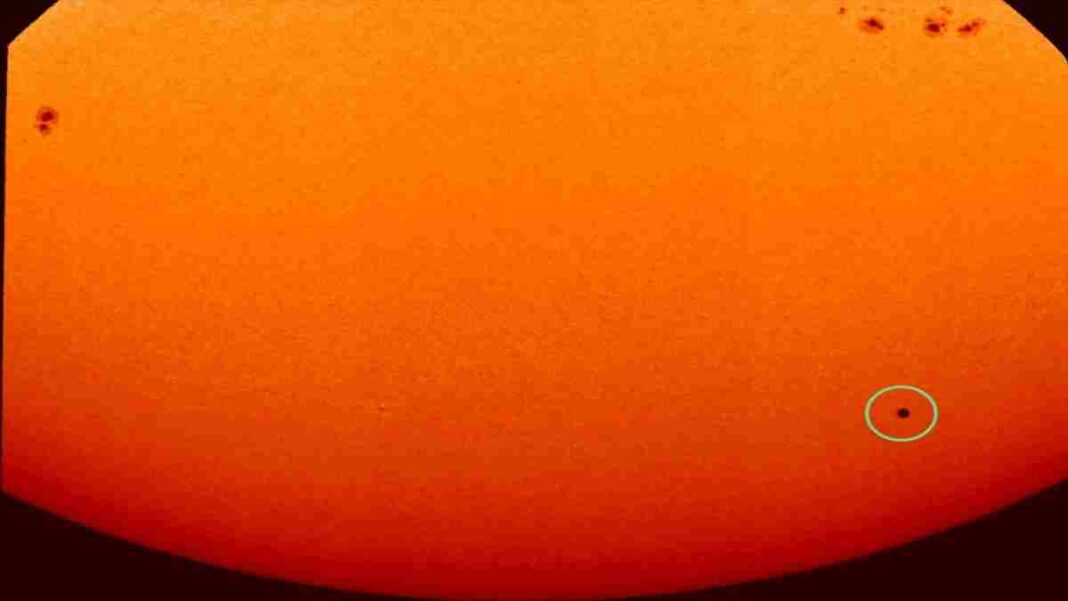UNITED STATES: The Solar Orbiter of the European Space Agency glimpsed Mercury in a rare occurrence. The Solar Orbiter saw Mercury transit as a black circle travelling across the Sun’s surface.
The European Space Agency was able to improve the accuracy of its data thanks to the fact that the transit could be seen on January 3.
Several instruments on board the spacecraft saw the transit, which can be seen in the lower right corner of the picture.
Both the Extreme Ultraviolet Imager (EUI) and the Polarimetric and Helioseismic Imager (PHI) captured images of the transit.
The sunspots that may be observed higher up the Sun’s disc differ from the transit that the PHI saw.
“Mercury is not only being observed when it passes in front of the Sun but also various layers of the atmosphere,” Miho Janvier of the Institut d’Astrophysique Spatiale in France said.
By estimating the planet’s distance from the Sun, astronomers have long utilised planetary transits to estimate the size of our solar system.
Most of the time, planetary transits are used to find planets that orbit other stars. As the planet moves across the face of the star, its shadow makes the surface of the star a little less bright.
Because this happens over and over, it’s possible to figure out how big the planet is and where it goes.
The European Space Agency crew utilised the Mercury transit as an opportunity to calibrate their sensors.
According to the ESA, the Solar Orbiter’s Spectral Imaging of the Coronal Environment (SPICE) instrument divides the Sun’s light into its component colours to separate the light from various atoms in the Sun’s lower atmosphere.
These particular atoms have been chosen to demonstrate the many layers and temperature ranges of the Sun’s atmosphere.
Also Read: NASA’s Chandra X-ray Observes Black Holes That Are about to Collide



